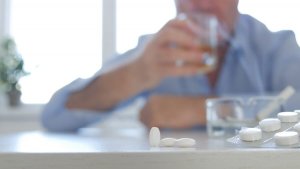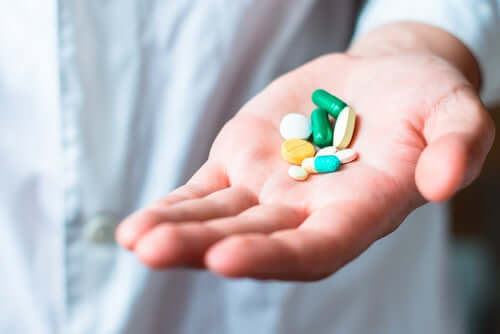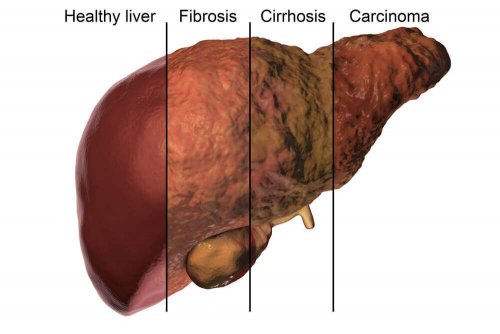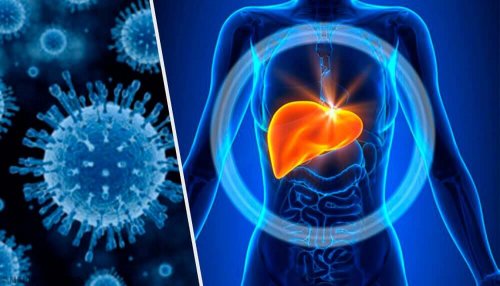Liver Metabolism: Antibiotics and Alcohol


Written and verified by the doctor Nelton Abdon Ramos Rojas
Have you ever heard that you shouldn’t drink alcohol when you’re taking medicine? You should be even more careful if you mix antibiotics and alcohol. The reason that mixing alcohol with antibiotics is bad for your health has to do with liver metabolism. However, it’s important to clarify some concepts to be able to explain this process.
What’s an antibiotic?
Antibiotics have helped save millions of human lives ever since the first use of penicillin.

Antibiotics generally help an individual’s defenses until the local response is enough to control the infection. An antibiotic is bacteriostatic if it stops the growth of bacteria, and a bactericide if it kills them. They can sometimes cause both effects, depending on the case.
What is alcohol?
Alcohol is a drug that depresses the central nervous system and progressively inhibits brain functions. This causes symptoms of intoxication that affect brain activity, and cause a lack of coordination and changes in behavior.
Frequent and prolonged consumption of alcohol causes inflammation and destruction of liver cells. This results in cirrhosis of the liver.
Discover: How to Know if You’re Addicted to Alcoholic Beverages
What does the liver do? Liver metabolism
The liver is an essential organ that serves multiple purposes for the body.

The liver plays a large role in the metabolism; it controls the proteins in the blood and the distribution of some nutrients like iron. It regulates cholesterol and triglycerides and eliminates toxins.
One of the primary functions of the liver is to filter toxic materials out of the body. Given that both antibiotics and alcohol are toxic, it’s the liver that metabolizes them.
When this toxic material builds up, it results in toxic hepatitis. To determine if the liver metabolism is functioning correctly, we use liver function tests. These tests are used to evaluate the liver activity.
Liver function tests
Liver function tests, to determine the functioning of the liver, measure certain proteins, enzymes, and substances including:
- Bilirubin: this is a yellow substance that is part of the bile. When the red blood cells decompose, they turn into bilirubin. There are tests that detect bilirubin in urine and blood. In the case of bilirubin in blood, when you have an excess it can cause jaundice.
- Aminotransferases: enzymes that show the integrity of the hepatocyte. In this way, they increase hepatic necrosis, that is, when the cells of the liver die.
- Alkaline phosphatase (ALP): the most sensitive marker of cholestasis, although it isn’t specific to just one disease.
Discover: Why You Shouldn’t Self-Medicate with Antibiotics
Toxic hepatitis

Toxic hepatitis is a term that refers to liver inflammation. This inflammation can have various causes, the most frequent being infections. However, an abnormal reaction to a drug and exposure to toxic substances in nature can also cause it.
Apart from the mentioned causes, mixing antibiotics with alcohol also causes toxic hepatitis. This is because both are toxic substances, and they interact when combined. When this happens we can distinguish between two mechanisms.
- Direct or intrinsic toxicity: Both alcohol and antibiotics are toxic and the liver metabolizes both of them. So, if the liver metabolism overloads, it won’t be able to manage the workload and it will result in hepatitis.
- Idiosyncratic toxicity: there are certain antibiotics that interact with alcohol and deactivate. This means they stop working and don’t kill bacteria. The big problem in this case, is that the bacteria that were supposed to die become resistant to the antibiotic, which makes it much more difficult to destroy.
To illustrate idiosyncratic toxic hepatitis, we’ll use the example of the antibiotic amoxicillin-clavulanic acid. Currently this drug is the most frequent cause of idiosyncratic toxic hepatitis in the West. Mixed with alcohol it deactivates, causing the bacteria to become resistant. This means that, in the future, that bacteria can’t be eliminated using amoxicillin-clavulanic acid.
Risk of resistance
Currently, bacteria are becoming more and more resistant to antibiotics, a serious public health problem for the global population. To avoid this, we should follow the guidelines of medicines, not self-medicate nor take antibiotics to treat viral diseases like the flu or colds, and also avoid the consumption of antibiotics with other substances like alcohol.
All cited sources were thoroughly reviewed by our team to ensure their quality, reliability, currency, and validity. The bibliography of this article was considered reliable and of academic or scientific accuracy.
-
Andrade, R. J., Lucena, M. I., Fernández, M. C., Pelaez, G., Pachkoria, K., García-Ruiz, E., … & Jiménez, M. (2005). Drug-induced liver injury: an analysis of 461 incidences submitted to the Spanish registry over a 10-year period. Gastroenterology, 129(2), 512-521.
-
Bleibel, W., Kim, S., D’Silva, K., & Lemmer, E. R. (2007). Drug-induced liver injury. Digestive diseases and sciences, 52(10), 2463-2471.
-
Hussaini, S. H., & Farrington, E. A. (2007). Idiosyncratic drug-induced liver injury: an overview. Expert opinion on drug safety, 6(6), 673-684.
This text is provided for informational purposes only and does not replace consultation with a professional. If in doubt, consult your specialist.








